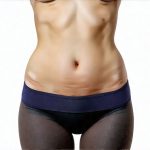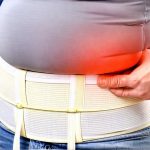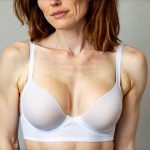The simple act of eating is often accompanied by a cascade of physiological changes within our bodies – digestion being the most prominent. Beyond the internal workings, however, lies a frequently overlooked aspect of post-meal experience: physical comfort. Many individuals report feeling sluggish, constricted, or generally uncomfortable after eating, and while dietary choices play a significant role, the clothing we wear can dramatically influence how comfortably we navigate this period. It’s not merely about avoiding tight waistbands; it’s about understanding the interplay between fabric, fit, and our body’s natural processes as we digest food. This seemingly minor detail – what we choose to wear after a meal – can be surprisingly impactful on overall well-being and enjoyment of life.
The connection between clothing and post-meal comfort isn’t widely discussed but is deeply rooted in how our bodies respond to external pressures, temperatures, and textures. Tight or restrictive garments can exacerbate the feeling of fullness and even contribute to digestive discomfort, while softer, looser options allow for greater ease and a more relaxed state. Consider how a tight belt feels after a large meal compared to elastic waistbands or flowing fabrics; the difference is palpable. This isn’t about vanity or aesthetics, but rather prioritizing functional comfort – choosing clothing that supports our bodies during a vulnerable time of internal processing. It’s about acknowledging that our digestive system needs room to work and doesn’t benefit from external compression.
The Science of Comfort & Digestion
The digestive process is inherently linked to bodily movement and space. As food moves through the digestive tract, organs shift and expand, requiring a degree of flexibility in surrounding tissues. Clothing that restricts this natural movement can impede digestion and lead to feelings of bloating, discomfort, or even heartburn. This isn’t merely anecdotal; studies have shown correlations between restrictive clothing and impaired gastrointestinal function, though more research is needed to fully understand the complex relationship. Constricting garments effectively create internal pressure, potentially affecting the efficiency of digestive processes and contributing to symptoms like acid reflux. If you often experience discomfort, exploring soft stools triggered by dietary changes might be helpful.
Furthermore, fabric choices contribute significantly to thermal regulation during digestion. Digestion itself generates heat within the body. Wearing synthetic fabrics that don’t breathe well can trap this heat, leading to increased sweating and discomfort. Conversely, natural fibers – such as cotton, linen, or silk – allow for better airflow, helping regulate body temperature and promoting a sense of coolness and ease. It’s also important to consider texture: rough or scratchy fabrics against the skin can be irritating even without digestion taking place, but this irritation is amplified when the digestive system is actively working.
Ultimately, prioritizing breathable, non-restrictive clothing isn’t about avoiding all fitted garments; it’s about making conscious choices that support your body’s natural functions and minimize potential discomfort during and after meals. The goal is to create a comfortable microclimate around your abdomen and torso – one that allows for ease of movement, optimal temperature regulation, and overall digestive well-being. Understanding post-meal routines can also improve comfort.
Fabric & Fit: Key Considerations
When selecting clothing for post-meal comfort, fabric should be the primary consideration. Natural fibers generally outperform synthetic materials in terms of breathability and softness.
- Cotton: A classic choice known for its softness and affordability. However, it retains moisture, so it might not be ideal for those prone to sweating or feeling overly warm.
- Linen: Exceptionally breathable and lightweight, making it perfect for warmer climates. It wrinkles easily but offers a relaxed and comfortable feel.
- Silk: Luxurious and gentle on the skin, silk allows for excellent airflow and is naturally temperature regulating. More expensive than other options but provides superior comfort.
- Bamboo: Increasingly popular due to its softness, breathability, and sustainable production methods. It’s also moisture-wicking.
Fit is equally crucial. Avoid clothing that feels tight or constricting around the abdomen, waist, or hips. Opt for looser silhouettes – think flowing dresses, wide-leg pants, or elastic-waisted skirts. Even seemingly minor details like seams can contribute to discomfort if they dig into the skin during digestion. Prioritize garments with minimal seams in areas that come into contact with your stomach. Consider clothing designed specifically for comfort, such as loungewear or relaxed fit options. It’s often better to err on the side of slightly looser than too tight. Recognizing comfortable clothing choices can be a game changer.
Optimizing Comfort During Different Meals
The level of comfort needed post-meal varies depending on the size and composition of the meal. A light snack requires less consideration than a large, heavy dinner.
- Small Snacks/Light Lunches: Loose-fitting clothing made from breathable fabrics is generally sufficient. Think comfortable t-shirts and relaxed shorts or pants.
- Moderate Meals: Opt for clothing with elastic waistbands or drawstring closures that allow for some expansion. Avoid tight belts or restrictive materials. Fabrics like cotton, linen, or bamboo are excellent choices.
- Large/Heavy Meals: Prioritize maximum comfort with flowing garments and breathable fabrics. Consider a loose-fitting dress or wide-leg pants paired with a soft top. Avoid any constricting clothing – including tight undergarments if possible.
It’s also important to consider the type of food consumed. Spicy foods can exacerbate acid reflux, requiring even more emphasis on comfortable, non-restrictive clothing to minimize discomfort. High-fat meals often take longer to digest, necessitating a prolonged period of relaxed comfort after eating. If you notice soft stool fluctuations alongside digestive issues, it’s worth investigating.
The Role of Undergarments
Often overlooked, undergarments play a significant role in post-meal comfort. Tight bras or restrictive underwear can contribute to overall feelings of constriction and discomfort.
- Bras: Choose supportive but not overly tight bras – ideally those without underwire. Wireless options are excellent for maximizing comfort after meals.
- Underwear: Avoid tight-fitting briefs or thongs. Opt for loose-fitting boxer shorts, comfortable briefs made from breathable fabrics, or even going without underwear altogether (depending on personal preference and clothing choices).
- Shapewear: Absolutely avoid shapewear immediately after eating. Shapewear is inherently restrictive and will likely exacerbate any digestive discomfort.
The goal with undergarments is to minimize pressure on the abdomen and torso, allowing for optimal digestion and comfort. Prioritize soft, breathable materials and loose-fitting designs. Consider how your undergarments contribute to overall compression and adjust accordingly. Sometimes cramping and flatulence are related to diet, but clothing can play a part too.
Beyond Clothing: Holistic Comfort Strategies
While clothing choices are a critical component of post-meal comfort, they’re just one piece of the puzzle. Combining comfortable clothing with other holistic strategies can further enhance well-being after eating.
- Mindful Eating: Savor your meals and eat slowly to aid digestion.
- Gentle Movement: A short walk after a meal can help stimulate digestion (but avoid strenuous exercise immediately after).
- Hydration: Drinking water aids in the digestive process and helps prevent constipation.
- Relaxation Techniques: Practicing deep breathing or meditation can reduce stress and promote relaxation, further enhancing comfort.
By combining conscious clothing choices with these holistic strategies, you can create a truly comfortable and enjoyable post-meal experience – one that supports both physical and mental well-being. It’s about recognizing the interconnectedness of our bodies and making mindful choices that prioritize overall health and happiness. If your discomfort is linked to diet, explore soft stools caused by specific food groups.


















